One of my initial memories connected with Ramgarh was lunching Kumaoni cuisine at a government owned TRH. Back then, on way to Mukteshwar, we had briefly stopped at this hill station. The action was over but the sensory spectacle of the romance and serenity of a green valley of the middle Himalayas, remote from airless plains and the usual tourist lines though already popular with holidaymakers and peace seekers, remains with me.
My next visit to Ramgarh came a few years later. When I returned to Ramgarh last month in April, I conclusively believed that this must be among the prettiest corners of the accessible Kumaon Himalayas. The Kumaon with which I connect the memories of mossy oak and rhododendron woods; the sough of the breeze in deodar and pine, the glittering snows, the verdure of rainy seasons, the rich brown and emerald of the mountainsides in drier seasons, the bright sunshine, the azures of sky, the poetic winter evenings or the warmth of smouldering logs in veranda.
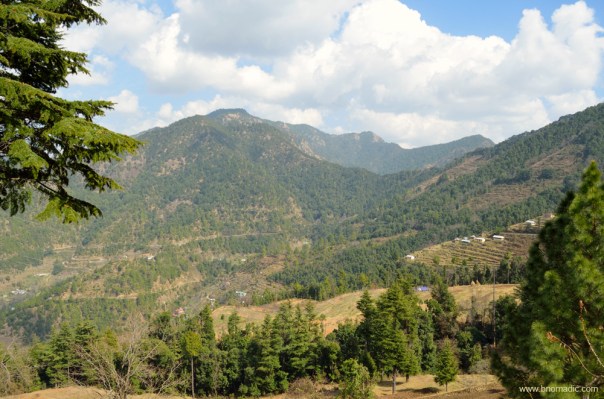
Valley view from the balcony of our room at TRH. The terraced orchards could also be seen in the frame. For more images from the region, please visit Flickr
The approach from the northern plains to Ramgarh is perfectly dreamy. Leave behind the heat, dust and worries of the plains as the road begins to climb; relish brief stopovers on the way, wind along and feel the fresh Himalayan air. The drive, in fact, happens to be one of the most beautiful and characteristic one in the outer Himalayas. Passing under the shadow of the Lariya-kanta, the road meanders amongst bloody rhododendrons, grassy spurs and deep-wooded khuds which run down from the northern prolongation of the peak. Crossing Bhowali, the road descends to reach the Ninglath stream after which a steady rise along an outlying spur of the Gagar range takes it to the crest of the Gagar pass at 2395m. Ahead, the road descends for a few kilometres to reach the market of Ramgarh. With the sun playing hide and seek amidst the trees, within a few hours of starting from plains, you are sitting in the cooler climes going for a hard earned meal. And at the same time admiring the enormous line of Himalayan snow.
The valley of Ramgarh comprises three parts: Ramgarh Malla, Ramgarh Talla and Agar. Occupying the upper reaches, the Malla is bounded on the north by Ramgarh Talla; on the west by Dhaniyakot; on the south by Mahryuri Talli and on the east by Agar. Embracing the lower reaches of Ramgarh, Talla is bounded on north by Kotauli Malli; on the south by Ramgarh Malla; on the east by Agar and on the west by Dhaniyakot. Traditionally, the Agar region consisted mostly of hillsides where mining was a special avocation. Just as other parts of Ramgarh, climate here is fairly salubrious; however, the soil is poor. Of late, this area is also being occupied by fast mushrooming hotels and resorts. The intriguing village Nayakana that is inhabited by the former dancing girls of Kumaon called Patas and Nayaks is also located in the forests of Agar; as one proceeds towards Almora. The remains of the government run Kumaon Iron Works Company that smelted iron ore is also located within this region.

Terraced fields in the Agar area. Please visit Flickr for more images of the region
In the evening, we leave for a ridge top which is pompously called Tagore Top (2196m) by the locals. A short of hike of 1.9 km from the main market of Malla takes you to the spot where Gurudev Shri Rabindranath Thakur is said to have composed a few poems of the acclaimed Gitanjali. Even though, the house where he lived during his stay in the valley is in hopeless ruins today, the spot continues to be a point of attraction for obvious reasons. The trail we take passes through a government managed orchard that hardly fruits. On the way, some characteristic touches of the hard native life could be observed. The womenfolk are seen carrying fairly heavy loads, ploughing fields and doing house chores or tending cattle. Chubby infants are often carried in a basket at the mother’s back. Descending from the ridge, a man warns us of a pet dog ahead. Luckily, he was tied.
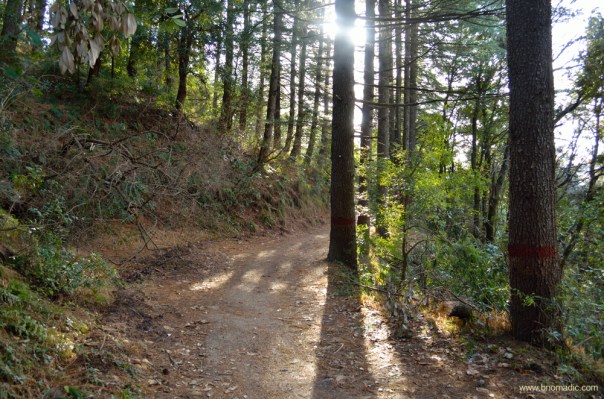
Starting from the Malla market, the 1.9km short trail passes through pines, cedars and rhododendrons
Soon we are at the top; in deep shock after seeing the treatment meted out to the house which was once occupied by Gurudev. Even though, the state government has recently started to construct a paved pathway from KMVN TRH to reach the spot, nothing has been done to mark the spot or to restore the modest but momentous property associated with Gurudev. The view from the spot is marvellous and encompasses almost the entire valley. The snowy range was still covered with grey clouds. We could but only imagine how the landscape would look in a clear open weather and, especially, it would have during the times of Gurudev. To our south lay the dense woods and rhododendrons merging with the Bhabhar belt; the luxuriantly wooded ridges of the Gagar Range thickly covered with oaks and pines to our north. Facing north, a chaotic mass of mountains lies before us, wooded hills, deep ravines and dark blue ranges rising one above another; against the backdrop of the edges of snowy peaks of the great Himalayas. What a photograph it would make on a clear weather day, we thought! We leave the spot and take the under construction trail to reach our shelter for tonight. The newly built trail is 3.5 km to the Malla market.

The trail passing through the orchards. Please visit Flickr for more images from the region

The remains of the cottage where Gurudev Shri Rabindranath Thakur is said to have composed a few poems of the acclaimed Gitanjali. More images from the region at Flickr

The fireplace! The house where Gurudev lived during his stay in the valley is in hopeless ruins today

The view from the spot is marvellous and encompasses almost the entire valley. More from the region at Flickr

View towards the valley floor. Please visit Flickr for more images

A Himalayan Jackal. More from the region at Flickr

Another dilapidated bungalow said to be associated with Gurudev. More images from the region at Flickr
From the creative world of literature, Gurudev was not the only one who sought inspiration from the serenity of Ramgarh but poetess Mahadevi Verma, patriot Ramdhari Singh ‘Dinkar’ and Sachchidananda Hirananda Vatsyayanv ‘Agyeya’ also lived here. Next day, we visit the ridge of Umagarh (2035m), atop which the summer abode of poet Mahadevi Verma is situated. Her home, 600m from the Malla market, has now been converted into a museum and looked after by the Kumaon University. The caretaker and his family live just next door. Even though, it commands a brilliant view, the ridge seems overburdened with houses and buildings. And so is a considerable part of Malla Ramgarh. The greenery and peace of the valley attracts weekend vacationers from far and beyond. Numerous olden hutments in the region have now been leased out and serve as hotels. Having established small cantonments and summer retreats, the British built sprawling bungalows. With their own set of claims, a few of such bungalows are now being billed as heritage hotels or writer’s cottage.

The summer abode of the poetess Mahadevi Verma atop Umagarh ridge. More from the region at Flickr
Many mountain lovers and businessmen, running tourism ventures, from the plains have now occupied the hillsides of Ramgarh; all feeding on limited resources. With little sense of running tourism businesses in hills, many of such properties look like a sore thumb. Even with the mushrooming of multiple-storied buildings, the market of Malla remains to be a basic one that closes as the sun sets. The olden traveller’s rest house is situated just next to the market. There is also a dharamshala, now locked, for native travellers. During the olden days, water was conveyed to this market by a series of wooden gutters from the Gagar pass located above.

A group of young travellers watching a fishmonger cutting fish into pieces. The dude hails from Brailley

Playing carrom is the favourite pastime of locals on the street. More images from the region at Flickr
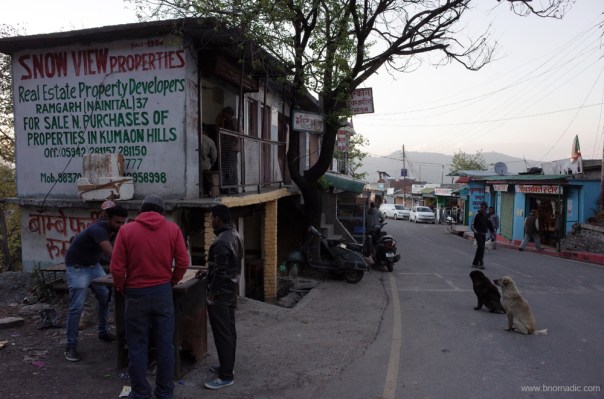
Street dogs waiting for their share outside a meat shop in the Malla market. More from the region at Flickr
Not many would know that the hunter turned conservationist Jim Corbett stayed at Ramgarh on his way to kill the Mukteshwar man-eater tiger in 1910. The dak bungalow he stayed in is still intact and is looked after by the PWD now. As we drive through the road leading to the Talla Ramgarh, we cross several olden buildings. The rest house is at a distance of five kilometres from the main market. During those days, the dak bungalows were strictly maintained for the British or burra sahibs. The staff which accompanied Corbett on his march to Mukteshwar stayed at the cottage, now a heritage retreat, just adjacent to this dak bungalow.

Built in 1899, the dak bungalow (now a PWD Rest House) is the place where Corbett stayed in 1910 during his march to Mukteshwar to hunt the man-eater tiger. The structure is still intact, though, most of the furnishings have been renovated. More images from the region at Flickr
On the third and our final morning in the valley, after sumptuous breakfast, I step out of the TRH and observe the cloudy spectacle; huge fluffy sea of whites hovering in the valley. I am convinced that any piece of literature or art would turn to be two completely different works when in the plains and in this valley amidst such a natural spectacle. During our descent to the plains driving along dusky hill roads, I inevitably think of the likes of Corbett and Gurudev undertaking foot marches on bridle paths to reach the delicate beauty of Ramgarh. Driving through winding roads, pine forests and tiny hamlets, we were back at Haldwani, the gateway to the Kumaon Himalayas.
Getting There
The fruit bowl of Ramgarh is 24 km from Bhowali which is 36 km from Haldwani. Almora is 54 km from Bhowali and Mukteshwar is 29 km from Ramgarh.
Average Altitude: 2000m
Best time to visit: Autumn and spring; avoid monsoons
Travel Lure: Himalayan views and natural heritage
Accommodation: Plentiful
 bNomadic
bNomadic

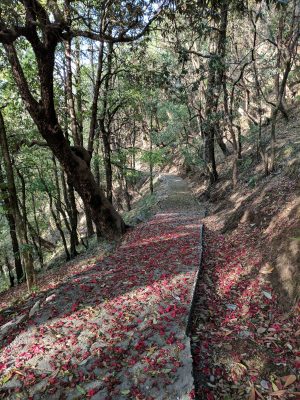




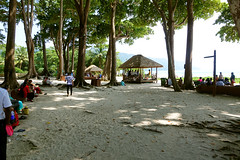






Very detailed and interesting sum of the trip. Picture of Himalayan Jackal is awesome. I like visiting smaller Himalayan range towns but the main problem with most is connectivity. Public transport system is not good as per my information.
Thanks Sapna for stopping by the blog. Glad to know you liked it. Transport is not an issue in this corner of Himalayas. You can also get shared cabs from Nainital or Haldwani to reach this place and others in the region. Keep visiting bNomadic for more such travel stories :-)😊
I’m impressed, I have to admit. Rarely do I come across a blog that’s both equally educative and entertaining, and without a doubt, you have hit the nail on the head. The problem is something that too few folks are speaking intelligently about. Now i’m very happy I stumbled across this during my search for something concerning this.
Thanks! 🙂 Visit bNomadic more often.
Excellent article. I have passed Ramnagar many time during our road trips but not explored the area in such detail. Now this calls for an exclusive visit. Kudos for this travelogue.
Absolutely! You must! Its a treat for literary lovers, especially, the short hike to “Tagore Top”. Thanks for the feedback 🙂
I will. Old age is making is lazy I guess :p Perhaps I should move to Ramnagar only.